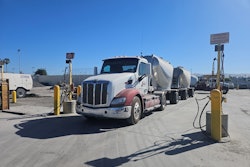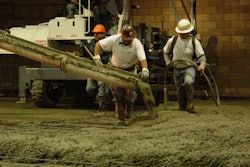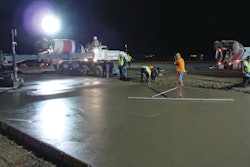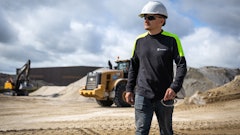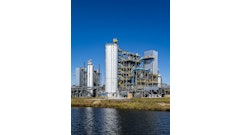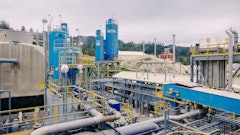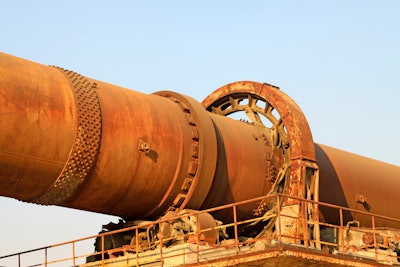
While being a cornerstone of economic growth, the construction significantly contributes to environmental degradation through substantial waste and carbon emissions. A key source of these emissions is the cement industry. Today, the pressure to adopt more sustainable practices is greater than ever. This shift is not merely optional but essential. Both the construction and cement industries have a unique opportunity to reframe their approach to waste through a symbiotic and circular strategy. This article explores how sustainable waste strategies can transform waste streams into valuable assets.
We must consider the environmental impact of materials throughout their lifecycle, both before and after they arrive at the jobsite. Construction projects inherently produce substantial waste, particularly demolition, that results in waste that is commonly sent to landfills. Besides generating waste, the concrete utilized in most construction projects has a significant environmental footprint. In 2021 alone, cement production accounted for 8% of global CO2 emissions.
Regulatory pressures and consumer demands are driving a shift towards more eco-friendly solutions, compelling companies to innovate and adapt. The Infrastructure Investment and Jobs Act, passed in November 2021, is a key driver of this shift. The act allocates $1.2 trillion for infrastructure projects, with substantial portions earmarked for initiatives incorporating environmentally friendly practices and materials. For instance, the act includes:
- Provisions for using recycled materials in road construction,
- Mandates for reducing construction waste, and
- Incentives for adopting green building technologies.
These measures directly impact construction companies, pushing them to integrate sustainable waste practices into their projects to qualify for federal funding.
The push to minimize waste in landfills extends far beyond construction and cement, affecting industries like consumer-packaged goods and pharmaceuticals due to stricter regulations and growing consumer preferences for environmentally responsible products. Many are unaware that the landfills receiving their waste emit significant amounts of methane, a potent greenhouse gas with over 80 times more global warming potential than carbon dioxide in the near term. Landfills are estimated to contribute about 20% of global methane emissions. These emissions have far-reaching implications, affecting climate change and public health, further underscoring the need to divert waste from landfills and find more sustainable alternatives.
 Alternative fuel at a Reworld Material Processing Facility prepared for transportation to cement kilns. Recently, ReKiln helped reduce the environmental impact of 30,000 tons of waste from a C&D processor by diverting the material from landfills, setting an example of circular construction practices. The success of this project highlights the potential of Reworld solutions to transform the construction industry's approach to waste.Reworld
Alternative fuel at a Reworld Material Processing Facility prepared for transportation to cement kilns. Recently, ReKiln helped reduce the environmental impact of 30,000 tons of waste from a C&D processor by diverting the material from landfills, setting an example of circular construction practices. The success of this project highlights the potential of Reworld solutions to transform the construction industry's approach to waste.Reworld
C&D Waste Solutions in Action
Sustainable practices encompass various strategies, including reducing waste at the source, reusing materials and recycling waste products. While addressing waste at all of these stages is crucial, implementing a circular approach can maximize reduction efforts. The circular economy concept, where waste is continuously repurposed and reintegrated into the production cycle, offers a way to give waste a second life while keeping it out of landfills.
Today's circular economy solutions are creating sustainable practices that convert waste into valuable resources. While recycling is a preferred method for material recovery, not all waste can be recycled. Modern processes are now able to transform non-recyclable waste, including construction and demolition (C&D) waste, into an alternative low-carbon fuel for cement kilns.
The process begins with the collection of non-recyclable waste materials such as wood, plastics, cardboard, roof shingles, and gypsum sourced from jobsites. These materials, often viewed as end-of-life debris with limited disposal options, have so much more to offer. Once collected, the waste undergoes meticulous sorting and processing at a material processing facility. Here, the waste is cleaned and shredded into a specified consistency, preparing it for the next stage of fuel production. This critical stage ensures that the materials meet the necessary standards for conversion into fuel. The shredded material is then converted into low-carbon engineered fuel through an advanced technological process, ensuring the material is suitable for use in cement kilns in terms of energy content and environmental compliance.
The engineered fuel is delivered to cement kilns, where it is used to replace traditional fossil fuels like coal. In the kilns, the fuel not only provides energy but also incorporates residual ash into the makeup of new cement. One hundred percent of the residual ash generated is incorporated into the finished cement product, closing the loop in the product lifecycle. This innovative process reduces reliance on fossil fuels for cement production—one of the most energy-intensive and emission-heavy processes for construction materials. Using alternative fuels avoids 300,000 metric tons of GHG emissions annually. On average, each ton of material processed should avoid 2.4 tons of CO2 when considering the benefit of landfill diversion. This includes industrial waste—not only C&D waste.
Circular Economy & Future Outlook
The latest innovations in circular economy waste plans highlight significant strides in creating more sustainable solutions to minimize waste to landfills and maximize material recovery, thereby reducing environmental impacts. By adopting circular economy principles, companies can lower their environmental footprint and create new economic opportunities.
Looking ahead, the construction industry must integrate sustainability to comply with regulations and meet customer demands. Embracing the latest innovations is critical as the construction industry moves toward a more sustainable future. Companies that fail to adapt to these changes risk falling behind their competitors and facing increased regulatory and market pressures. Conversely, those who lead the way in sustainable practices can enhance their reputation, attract environmentally conscious clients, and contribute to a healthier planet.




